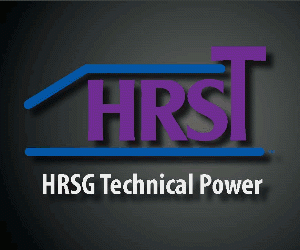The V84.3A session began much like the E-class segment of the program, with a review of key facts about the frame: more than 370 engines of Siemens manufacture operating worldwide, 22-million EOH of fleet experience, and more than 99.3% overall fleet reliability. One big difference between the sister frames is that 80% of the F-class units operate under a long-term service agreement with the OEM, compared to about 35% for the E-class machines.
The theme of this session was “Future-proofing your plant: Ensuring commercial success through mods and upgrades.” Confirmation of the OEM’s commitment to continual performance improvement is that the fleet service factor (operating hours divided by period hours) increased from 57% to 62% in the last three years even as competition in the power generation sector of the industry intensified and renewables gained market share.
Reviewing the OEM’s development plan for future enhancements—some already in commercial service or beta testing—one comes away with the belief that this frame is destined to remain competitive for many more years. If any of the following products/services are new to you, access the 4000F Engineering Session slides on the CEP for more information, or contact the Siemens representative for your plant.
Maintenance:
-
- Optimized maintenance intervals.
- Increased outage flexibility.
- Wider range of service concepts available—including the fast outage incorporating innovative field service solutions.
Performance:
-
- Performance boost with Siemens’ Advanced Turbine Efficiency Package.
- Upgrade with Service Packages 7 and 8—including cooling-air reduction, HGP improvements, compressor mass-flow increase.
- GT Auto Tuner.
- Low-NOx emission solutions.
Flexible operation:
-
- Increased load gradients.
- Fast start, turn up, extended turndown.
- Optimized part-load capabilities.
- Expanded Wobbe range and hydrogen capability.
Improved airfoils. One of the speakers explained why compressor blade and vane enhancements have contributed in a major way to gains in output and efficiency: Improved manufacturing processes and materials. For example, five-axis precision milling has replaced conventional manual finishing methods, improving the accuracy of the airfoil profile and leading and trailing edges. Working surfaces also are smoother, and improved materials mitigate corrosion and erosion.
33MAC. The 33,000 EOH interval, introduced in 2009, is the standard maintenance concept for the SGT5/6-4000F. The leap from 25MAC, when the engine was introduced in 1996, to 33MAC (some machines have had positive experience to 38,000 hours), was enabled primarily by improvements in coatings and airfoil geometry and cooling. Looking ahead, advanced turbine hardware, scheduled for 2022 commercial availability, with a new base material and geometry improvements to increase low-cycle-fatigue life, will allow up to 2000 starts—double that of today’s blades and vanes.
FODS Smart. The benefits of Siemens’ Foreign Object Detection System, installed on well over a hundred turbines worldwide, were examined. FODS provides continuous monitoring for potential loss of combustion-chamber parts by way of acceleration sensors and a data acquisition and evaluation unit. System warns if a minor issue is detected (one that might lead to a system fault in the future) and alarms on a fault.
Other topics addressed included improvements to inlet guide vanes for faster response and the RCIE process, similar to that described above for the E-class engines.
The mods and upgrades presentation for the V84.3A was introduced with a chart that said enhancements to assure rapid frequency response, fast starting, part-load optimization, combustion of synthetic liquid fuels, and lower emissions by use of a premix pilot burner were ready for validation on this engine. Operational experience was offered on the following products:
-
- Service Package 6 (SP6). Implement during a major outage to increase efficiency and boost power output. SP6 includes the HR3 burner with reduced swirl (HR3 RS), combustion chamber requiring less cooling air (CAR), and improved turbine blades and vanes. Upgrade benefits depending on conditions are a gas-turbine power boost of up to 16 MW and an efficiency increase of up to 0.7% (for a 1 × 1 combined cycle, 21 MW and 0.4%).
- Compressor Mass Flow Increase (CMF++). Implement during a major outage to increase power output by up to 13 MW from the gas turbine and up to 22 MW from a 1 × 1 combined cycle.
- Part load optimization. Implement during an HGP inspection to reduce minimum load while maintaining CO within regulatory limits and to improve frequency response. Hardware mods include new seals in the compressor and modifications to the inlet guide vanes. Quantification of financial benefits requires a site evaluation.
- NOx reduction. Reduce NOx emissions while increasing power output. Calculation of benefits depends on fuel, site conditions, and other considerations.
- GT Auto Tuner (GTAT). Implement during a minor inspection to maximize efficiency and minimize emissions during normal operational changes. First use revealed a NOx emissions reduction of up to 10% by activating the GTAT and virtually no degradation in power output over time between major outages.




